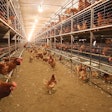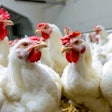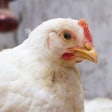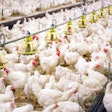
The poultry industry – and others involved in food production – should be telling consumers how modern agricultural practices have helped make food production more sustainable, explained a trio of panelists May 7 during the Animal Agriculture Alliance 2020 Virtual Stakeholders Summit.
Sustainability matters to consumers
A growing number of consumers rank sustainability as one of the most important factors considered when making decisions about which food to purchase. However, this term is nebulous to consumers – it means something different to everyone.
Sustainability is especially a hot topic with younger consumers who consistently say they’d prefer to buy a product marketed as green when given the choice.
“Consumers look at sustainability as spanning the entire lifecycle of the food chain. It will become an expectation for companies to offer to consumers,” said Marianne Smith Edge, RDN, The AgriNutrition Edge.
“According to the 2019 Power of Meat Report, more than half of consumers want brands to provide more information on how animals are raised and the meat source. As a retailer, I see this as a positive sign because it means that consumers are interested in engaging with you,” Molly McAdams, PhD, retail advisor and Texas Cattle rancher, former vice president, HEB, noted.
“Sustainability is not an issue that’s ever going away. It’s not millennials and it’s not Gen Z. This is an important issue that impacts every generation that starts to interact with food.”
How agriculture is innovating
The presentation highlighted five innovations in modern agriculture that have helped make the industry more sustainable:
- Genetic selection/artificial insemination
- Husbandry
- Animal housing
- Nutrition
- Health protocols
“In many cases, agriculture hears the term sustainability and gets scared or offended,” Lee Bob Harper, DVM, Associate Director, Technical Services, Zoetis, said. “Don’t be scared – we should be ready to embrace this. We have a great story to tell because most farmers and ranchers were sustainable long before the term was cool.”
Like what you just read? Sign up now for free to receive the Poultry Future Newsletter.


















